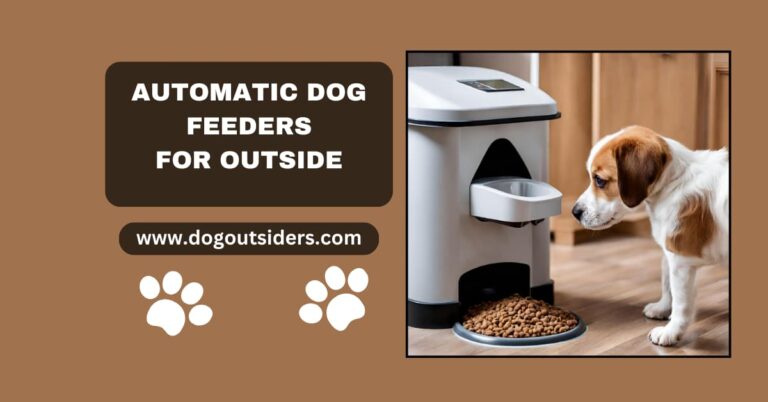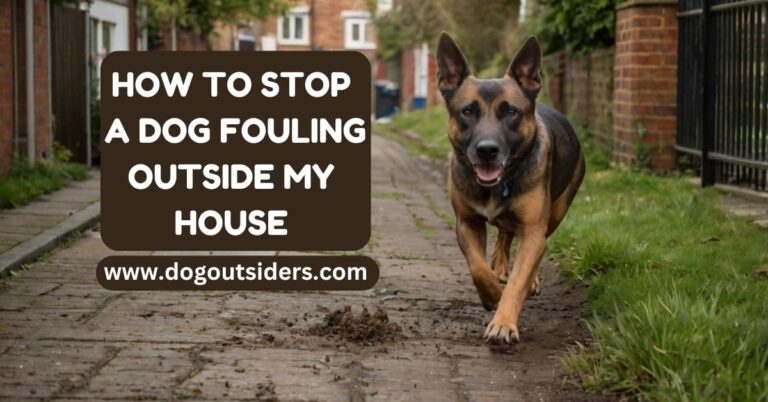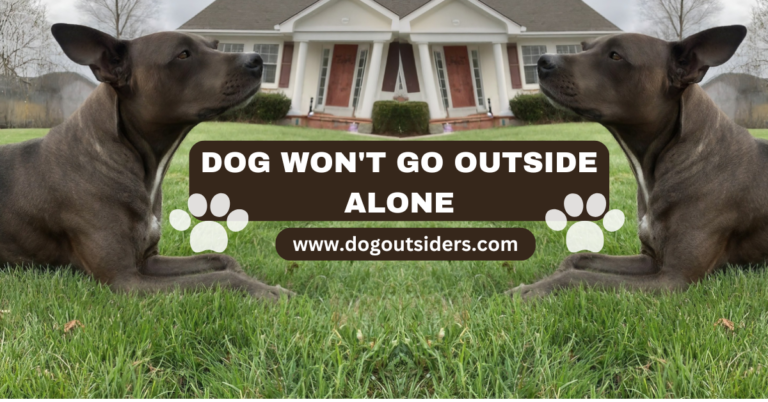Did you know that leaving a dog outside for extended periods can lead to serious health issues? As a dog lover, I was shocked to discover that this common practice could potentially be considered animal cruelty. While some may argue that dogs enjoy being outdoors, the reality is that they rely on us for protection and care. Join me as we explore the question: is leaving a dog outside animal cruelty? Through this discussion, we’ll delve into the impact of outdoor exposure on a dog’s well-being and what responsible pet ownership truly entails.
Key Takeaways
- Understanding Cold Dangers:
Recognize the risks of leaving a dog outside in cold weather to prevent harm.
- Recognizing Signs of Cold Stress:
Learn the signs of cold stress in dogs like shivering, shallow breathing, or anxiety.
- Legal Consequences for Neglect:
Understand the legal implications and potential consequences of neglecting a pet in cold conditions.
- Defining Safe Temperatures:
Be aware of safe temperature ranges for dogs to ensure their well-being during colder months.
- Protecting Paws in Winter:
Take precautions to protect your pet’s paws from injuries or frostbite caused by icy conditions.
- Helping Pets Left in the Cold:
Take action by reporting any instances of pets left outside in unsafe conditions to authorities for intervention.
Understanding Cold Dangers
Cold Weather Risks
Pets exposed to cold weather face risks such as hypothermia and frostbite. The cold temperatures can be dangerous, especially for breeds not suited to colder climates. Providing proper shelter is crucial to protect pets from the cold. Insulated shelters and bedding can help keep pets warm and safe.
Importance of Shelter, Food, and Water
Shelter: Pets need a shelter that is dry, draft-free, and elevated off the ground. Adequate insulation helps retain warmth.
Food: In cold weather, pets burn more calories to stay warm, so providing extra food is essential. A well-balanced diet supports their overall health.
Water: Ensure pets have access to unfrozen water at all times. Dehydration can occur quickly in cold weather, so frequent water checks are necessary.
Recognizing Signs of Cold Stress
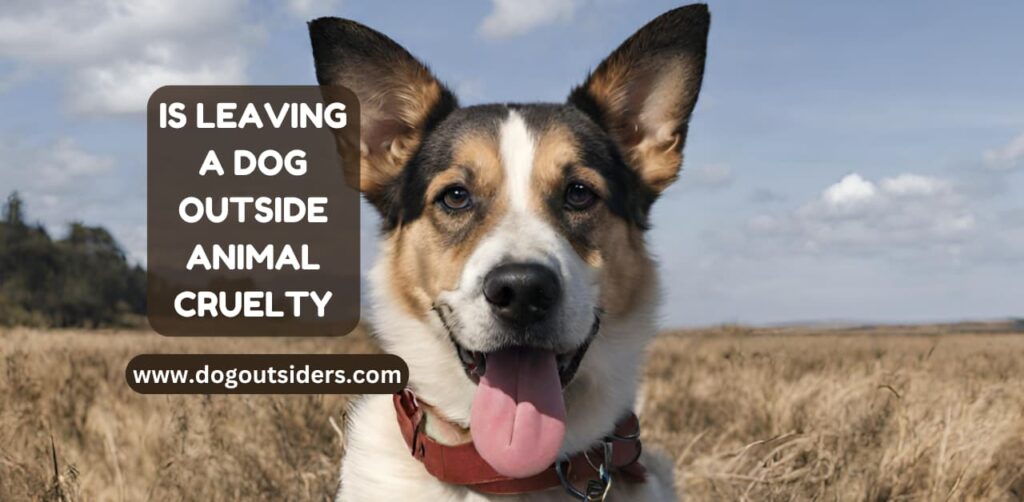
Watch for Extreme Cold Symptoms
Dogs left outside in extreme cold may exhibit signs of distress. Shivering, whining, or seeking shelter are common indicators of discomfort.
Identifying Hypothermia and Frostbite
Hypothermia can set in quickly during periods of extreme cold. Look for signs like weakness, stumbling, or slow breathing.
Taking Action to Help
If you suspect a pet is suffering from cold stress, bring them indoors immediately. Provide warm blankets, access to a heated area, and offer hot water bottles wrapped in towels.
I remember a time when my neighbor’s dog was left outside during a snowstorm. I noticed the poor animal shivering uncontrollably and immediately alerted my neighbor to bring their pet indoors. It’s crucial to act swiftly when you notice any signs of distress in animals exposed to extreme cold temperatures.
Legal Consequences for Neglect
Felony Charges
Neglecting a dog and leaving it outside can result in felony charges in severe cases. Felony charges are serious legal consequences that may lead to imprisonment. Failure to provide adequate care for pets can escalate into a felony case, especially when neglect leads to harm or death.
Case Examples
In extreme instances, neglectful behavior towards animals has led to high-profile case examples where individuals faced felony charges. Charges of animal neglect can have long-lasting repercussions on an individual’s record and reputation within the community.
Laws and Regulations
Various laws and regulations are in place to prevent animal cruelty and ensure the well-being of pets. These laws outline specific responsibilities that pet owners must adhere to. Understanding local laws regarding animal welfare is crucial for all pet owners to avoid potential legal issues related to neglect.
Defining Safe Temperatures
Importance of Adequate Shelter
Pets, including dogs, should not be left outside in extreme cold conditions. Safe temperatures for pets in cold weather generally range from 45 to 85 degrees Fahrenheit. Providing adequate shelter is crucial to protect pets from harsh weather elements. Adequate shelter includes insulated dog houses, blankets, or access to a warm indoor space.
Recognizing Dangerous Temperatures
When the temperature drops below 45 degrees Fahrenheit, pets are at risk of hypothermia and frostbite. It’s essential to bring pets indoors during severe cold spells. Pets left outside in freezing temperatures can suffer from severe health issues such as respiratory problems and even death. Monitoring your pet’s behavior for signs of distress is vital.
Personal Insights
I always ensure my dog has a cozy bed and access to warmth when the weather gets chilly. Providing extra blankets and a heated pad can make a significant difference in keeping them comfortable. Ensuring that outdoor water bowls don’t freeze over is crucial for preventing dehydration in cold weather. I always check the water frequently and replace it with fresh water to keep my pet hydrated.
Protecting Paws in Winter
Cold Weather Precautions
During winter, it’s crucial to protect your furry friend’s paws from the harsh cold. Avoid leaving them outside for extended periods. Winter walks can be enjoyable, but beware of icy surfaces that can cause injuries to your pet’s paws.
Pet-Friendly Products
Consider using pet-safe ice melts on your property to prevent harm to your dog’s paws. Look for specific paw balms for added protection. Invest in durable booties for your pet to shield their paws from snow and ice. Ensure a proper fit for maximum comfort.
Indoor Practices
After walks, wipe your dog’s paws with a damp cloth to remove any salt or chemicals they may have picked up outside. Keep your home warm and cozy during winter to provide a comfortable environment for your furry companion.
Personal Insight:
I always make sure to check my dog’s paws after walks in the winter. It’s essential to keep them clean and dry to prevent any issues.
Additional Tips:
- Place a rug or mat near the entrance of your home to help clean off your pet’s paws before they come inside.
- Trim the fur between your dog’s toes to prevent ice buildup during snowy walks.
Helping Pets Left in the Cold
Providing Shelter
When finding pets left outside in freezing temperatures, provide them with a warm shelter. This could be a cozy doghouse or insulated area to shield them from harsh weather conditions.
Offering Food and Water
Pet owners who leave their animals outside often forget to provide adequate food and water. If you encounter neglected dogs, offer them food and fresh water to prevent starvation and dehydration.
Seeking Professional Help
If you come across a severely neglected animal that is on the brink of death, contact local animal control authorities immediately. They have the resources and expertise to rescue the suffering pets.
I once encountered a shivering stray dog on a frigid winter night. I quickly brought it into my home, provided warm blankets, and fed it. The next day, I contacted animal services for further assistance.
Reporting Neglect Cases
Reporting cases of animal neglect is crucial in preventing future incidents of cruelty. Contact your local animal welfare organization or authorities to report any instances of animal cruelty you witness.
In situations where neglect is persistent, legal action may be necessary to hold irresponsible pet owners accountable for their actions. By reporting these cases, you can help save innocent lives from unnecessary suffering.
Breed and Size Factors
Breeds
Different breeds of dogs react diversely to cold weather. Some breeds, like Huskies and Saint Bernards, have thick fur coats that provide insulation against the cold. On the other hand, breeds with short hair, such as Chihuahuas or Greyhounds, are more prone to feeling the chill.
Understanding your dog’s breed is crucial in determining how they handle colder temperatures. For example, smaller breeds like Toy Poodles are less tolerant of the cold due to their size and lack of insulating body fat.
Sizes
The size of a dog also plays a significant role in how they cope with cold weather. Larger dogs generally have an easier time retaining body heat due to their larger mass. They tend to stay warmer for longer periods compared to smaller dogs.
Smaller dogs have a higher surface area-to-volume ratio, making them lose heat faster than larger breeds. This means that small dogs like Dachshunds or Yorkshire Terriers may need extra protection from the cold.
When it comes to caring for pets left outside in chilly conditions, considering both the breed and size factors is essential. Providing appropriate shelter, bedding, and clothing can help mitigate the risks associated with leaving a dog outside in cold weather.
Preventing Frostbite
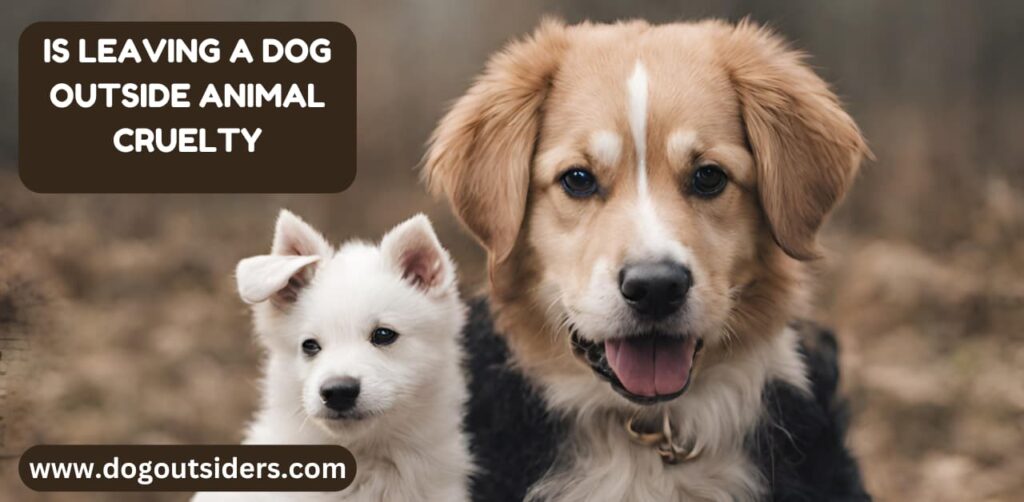
Recognizing Symptoms
Frostbite in pets can occur when they are exposed to cold temperatures for an extended period. Symptoms include pale or gray skin, coldness to the touch, and pain in the affected area. Pets with hypothermia are at a higher risk of developing frostbite. It is crucial to recognize these symptoms early to prevent long-term damage.
Protecting Your Pet
To protect your pet from frostbite, limit their time outdoors in freezing temperatures. Provide them with warm shelter, blankets, and access to a cozy indoor space. Ensuring your pet has adequate food and water can help maintain their body temperature and reduce the risk of frostbite.
Understanding Risks
Certain dog breeds such as Swishers are more susceptible to frostbite due to their short coats and low body fat. Understanding these risks can help you take proactive measures to keep your pet safe.
How to Take Action
Report Cases
If you go by a situation where a dog is left outside in extreme weather conditions, call animal control immediately. They have the access and authority to intervene in such cases promptly.
Understand Procedures
When making these calls, provide detailed information about the situation. Explain why you believe it constitutes animal neglect or cruelty. This helps authorities assess the severity of the issue.
Law Enforcement Involvement
Law enforcement agencies play a crucial role in addressing animal abuse cases. They work closely with animal control agencies to ensure that animals are protected and their welfare is prioritized.
Taking action against animal neglect involves being vigilant and proactive in reporting any instances of mistreatment or negligence towards animals. By raising awareness about these issues and reporting them, we can contribute to creating a safer environment for our furry companions.
Conclusion:
After understanding the dangers of leaving pets outside in the cold, recognizing signs of stress, and learning about legal consequences, it’s clear that protecting our furry friends is crucial. Defining safe temperatures, safeguarding paws, and considering breed factors are essential steps to prevent harm. Taking action to help animals in need, especially during winter, is not just a choice but a responsibility we all share.
As pet lovers, let’s spread awareness about the risks pets face in cold weather and take steps to ensure their safety. Whether it’s providing proper shelter, monitoring temperature thresholds, or reporting neglect, every effort counts. Together, we can make a difference and create a safer environment for our beloved companions.
FAQ’s:
It is not safe to leave a dog outside in cold weather as they can suffer from hypothermia and frostbite. Provide adequate shelter, warmth, and protection for your pet during winter.
Signs of cold stress in dogs include shivering, lethargy, difficulty walking, whining, and seeking warm places. Monitor your dog for these signs and take action to keep them warm.
Yes, leaving a dog outside in extreme cold without proper shelter can result in legal consequences for neglect or animal cruelty. It is important to provide proper care and protection for your pet.
Protect your dog’s paws in winter by using booties or paw wax to prevent ice accumulation and protect against harmful chemicals on roads. Wipe their paws after walks to remove salt or ice-melt chemicals.
If you see a pet left out in the cold, contact local animal control or authorities immediately. Provide any necessary information about the situation to ensure the safety and well-being of the animal.



